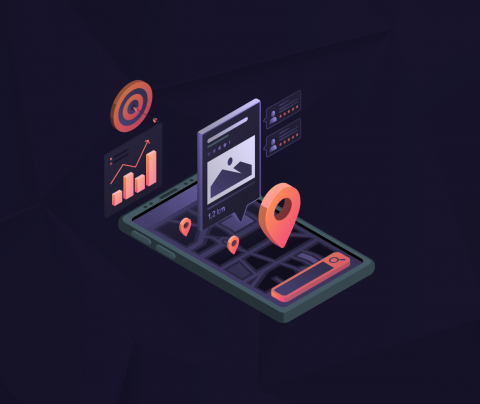Affiliate marketing used to be about hustle – testing hundreds of offers, scaling fast, and keeping spreadsheets open 24/7. But the game has changed. Traffic has become more expensive, competition sharper, and attention spans shorter. The biggest bottleneck now isn’t the number of offers or creatives – it’s how efficiently you can manage and optimize them. That’s where AI comes in.
I’ve been in affiliate marketing long enough to remember when automation meant scheduling reports manually in Excel. Then came tracking tools, traffic managers, and smart bidding. Now, AI has turned into the ultimate unfair advantage. If you’re serious about growing in 2025, you can’t afford to ignore it.
The real problem affiliates face today.
Here’s the truth no one likes to admit – most affiliates spend more time fixing problems than making money. You think you’re optimizing campaigns, but half your time goes to cleaning data, rewriting ads, or figuring out why the ROI dropped overnight.
I used to blame traffic sources or bad offers. But the real issue was data overload. Every day, I’d get hit with thousands of numbers – CTR, EPC, CR, CPM – and no clear picture of what was actually happening. The more data I collected, the less I understood it.
That’s the modern affiliate trap. You have access to incredible tools, but they’re fragmented. One platform tracks leads, another handles routing, and a third one measures conversions. Nothing talks to each other. You end up with a dozen dashboards and zero clarity.
AI fixes that by making sense of chaos. It doesn’t just automate tasks, it connects dots. It learns how your campaigns behave, predicts when results will drop, and even suggests what to test next.
But here’s the catch: not every AI tool is worth using. Some are shiny distractions that promise miracles and deliver confusion. The key is to pick the ones that actually solve your problems – the tools that save time, not waste it.
The rise of free AI tools for affiliates
2025 is the first year when truly powerful free AI tools became accessible to everyone. You don’t need to spend thousands on enterprise licenses anymore. I’ve tested dozens, and a few stand out as real game changers.
ChatGPT – the all-around strategist
ChatGPT isn’t just a writing assistant. It’s the brainstorming partner I wish I had when I started. I use it to come up with ad angles, competitor breakdowns, and even customer personas. When I describe a product and audience, it gives me 10 possible hooks – emotional, logical, outrageous.
Instead of staring at a blank page, I start with ideas that already make sense. That saves hours of creative fatigue. I also use ChatGPT to analyze feedback data – dropping in customer reviews to identify recurring pain points. Those phrases often turn into winning headlines.
Canva Magic Write — creative at scale.
Every affiliate hits the same wall – creatives. You can have the best offer in the world, but if your banner looks generic, it dies in the feed. Canva’s AI tools changed that for me. Magic Write helps build visuals faster than I could ever do manually. I generate ten banner variations, tweak fonts, and export them in one go.
This isn’t about design perfection – it’s about speed. AI lets you test faster, fail faster, and find what works. The faster you iterate, the faster you scale.
Perplexity AI — smarter research
Affiliate marketing is part creativity, part detective work. Before launching in a new vertical, I need to know who’s dominating it, what angles perform, and what audiences respond to. Perplexity helps me research competitors and discover trends without wasting hours on Google.
It summarizes long discussions, extracts insights, and gives me sources I can actually verify. It’s like having an analyst who doesn’t sleep.
Connecting everything
Here’s where things usually fall apart, you can have the best AI tools for content, creatives, and analytics, but if your backend setup is weak, it’s all for nothing. Imagine scaling ten campaigns with five ad networks, and every one of them has different traffic patterns. Without automation, it’s a nightmare.
That’s why I use Hyperone as the backbone of my setup. It automates how traffic flows between sources and offers, handles fraud, and tracks performance in real time. It’s not just about routing – it’s about freeing mental space. Instead of checking logs all day, I can focus on testing new angles and improving user experience.
I’m not exaggerating when I say automation saved my business. Before, I’d lose hours daily trying to identify fake traffic or broken postbacks. Now, Hyperone’s anti-fraud logic handles that automatically. I only get alerts when something serious happens.
But this isn’t a sales pitch. The point is that AI tools alone won’t fix bad systems. You need a foundation that makes them work together. Hyperone does that by bridging automation with intelligence, turning data into actual decisions.
The invisible cost of doing everything manually
Every affiliate knows what burnout feels like. You wake up, check stats, fix issues, and by 10 a.m., your energy’s gone. Manual optimization kills creativity. It’s slow, repetitive, and emotionally draining.
I remember running campaigns manually – setting bids, tracking conversions by hand, and refreshing dashboards like a zombie. It worked, sure, but it wasn’t sustainable. When you handle thousands of clicks per hour, human error becomes inevitable.
AI removes that pain. It doesn’t complain, doesn’t get tired, and doesn’t forget to update spreadsheets. It keeps working even when you’re asleep. That’s the real reason to embrace automation — peace of mind. You stop firefighting and start thinking strategically.
Building your AI-driven affiliate workflow
So how do you actually make it work? I follow a simple structure:
- Research and planning: I use Perplexity and ChatGPT to gather market insights, build customer avatars, and brainstorm hooks.
- Execution and automation: Hyperone handles routing, fraud protection, and analytics. Canva manages visuals, Jasper or ChatGPT drafts copy, and I connect everything through custom workflows.
That’s it – two steps, repeated weekly. Once the structure is solid, scaling becomes predictable.
What to expect next
AI isn’t replacing affiliate marketers, it’s replacing their busywork. The marketers who resist automation will spend their days reacting to problems. The ones who embrace it will build systems that run themselves.
In the next few years, AI will go beyond writing and design. We’ll see predictive traffic buying, dynamic creative testing, and automatic budget reallocation based on ROI forecasts. The winners will be those who have already built AI-ready systems today.
I see it clearly – affiliate marketing is turning into a data game. Whoever reads and reacts to data fastest wins. AI gives you that speed. Hyperone gives you the control layer that keeps it stable.
Final thoughts
If there’s one thing I’ve learned from all this, it’s that efficiency beats effort. AI won’t make you creative, but it will make your creativity scale. Free tools are powerful enough to get you started – the rest depends on how well you connect them.
Start small. Automate one thing, maybe reporting or creative generation, and see what happens. You’ll never want to go back.
In 2025, affiliate marketing belongs to those who adapt. The line between “average” and “elite” isn’t luck anymore – it’s automation. I use AI to simplify, Hyperone to manage, and experience to decide. That combination keeps me ahead while others drown in spreadsheets.
So when someone asks how I keep my campaigns running smoothly, I smile and say – It’s not magic. It’s AI, efficiency, and a system that never sleeps.











